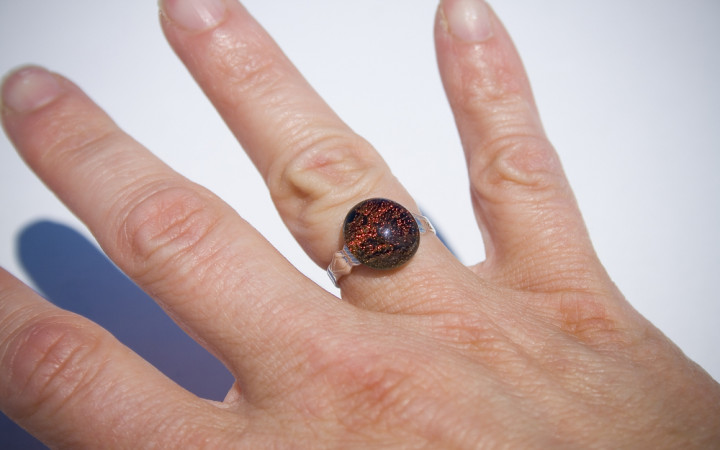Today’s Wonder of the Day was inspired by Caleb. Caleb Wonders, “how does a mood ring work” Thanks for WONDERing with us, Caleb!
Wouldn't it be great if your parents or your teachers wore something that could immediately tell you whether or not they're in a good mood? It would sure help you decide when would be the best time to tell them about that forgotten chore or the dog eating your homework!
If you traveled back in time to the mid-1970s or to a flea market today, you might find just such an object. We're talking about mood rings, of course.
Two inventors from New York — Joshua Reynolds and Maris Ambats — created mood rings in 1975. They claimed that their mood rings would change colors as wearers' moods or emotional states changed.
For example, here are the colors that would supposedly reflect particular moods:
- violet: happy or romantic
- blue: calm or relaxed
- green: neutral
- yellow: tense or excited
- brown: nervous or anxious
Mood rings quickly became a fad, especially with young girls. A "fad" describes something — such as a product, fashion, or way of acting or speaking — that gains popularity quickly and is followed enthusiastically by a large group of people.
Fads are temporary by definition and often fade quickly. A similar fad from the time of mood rings was the pet rock.
Mood rings featured fake gemstones that were usually made of either glass or quartz. The glass or quartz “stones" were usually hollow shells filled with liquid crystals.
These special crystals were thermochromic, which means they would change color in response to changes in temperature. Changes in temperature — either air temperature or body temperature — would cause the liquid crystals to twist.
When they twisted, the liquid crystals would then reflect different wavelengths of light. This would cause the color of the “stone" to change.
The mood ring fad has more recently been revived through the use of mood nail polish and mood lipsticks. Like the mood rings, these products change colors based on changes in temperature.
The inventors of mood rings believed that body temperature changes when a person's mood changes. There may be a bit of truth to that.
For example, happiness may slightly increase your peripheral (outer) body temperature as your body sends more blood outward to your extremities. Likewise, fear or stress may reduce peripheral body temperature as your body sends more blood toward your internal organs in a protective response.
As your fingers get hotter or colder in response to bodily changes, mood rings were expected to change color to reflect these changes. Whether these changes truly reflect mood changes, though, is questionable.
No direct link between a particular mood and a specific color has ever been confirmed. In fact, it appears that air temperature may have a greater effect on the color of mood rings than body temperature.
Mood rings were manufactured so that they would usually display a neutral green color when worn by someone with an average resting peripheral body temperature of about 82° F. As air or body temperatures changed, the liquid crystals in mood rings would twist and cause color changes.
Even if they didn't reflect true mood changes, they were fun to wear!




